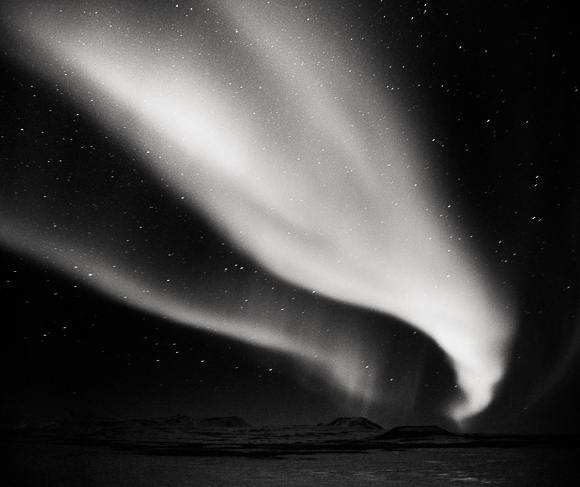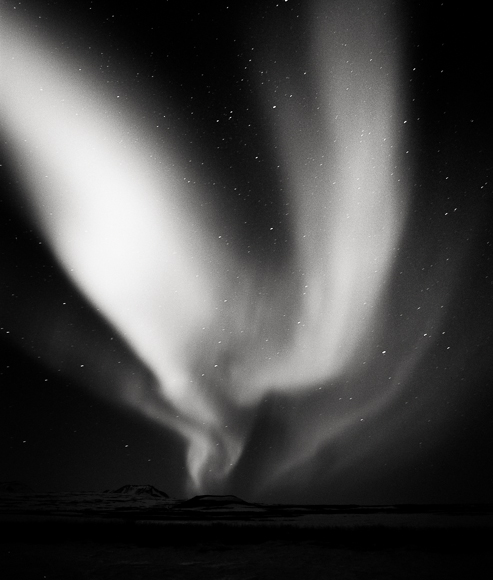Seeing Northern Lights is very exceptional and amazing experience. I hope that I never forget the feeling I had after the first magical show I saw last winter in Landmanalaugar. The explosion of colors and shapes was unbelievable and definitely not from this world. On the other hand, from pure photographer’s perspective it is not easy to capture those special moments. That time I really did not handle it well from technical perspective. For example I was using only ISO 800, but I could have used even higher and get much shorter times, without blurry stars, and there were many other little things I should have done differently. With this experience I was getting ready for this year’s trip. I tested my Canon 5D mark II and I was sure that I can use up to ISO 1600 without any obvious quality deterioration, that I can use the lowest aperture on my 17-40 lens and I really have to pay attention to focus properly, manual focusing recommended.
So this is technical part, to which one has to pay attention, while on the location, but there is other challenge and it is the raw file post process. I believe I still remember the colors and atmosphere of those nights, but I unfortunately I cannot really transfer it to my final photographs and when I was happy with results on screen and moved to soft proofing for printing another nightmare started. The color gamut of the paper and printer was significantly smaller than what I saw on my screen, so I had to start again and again. At one point I was so frustrated that I just tried to convert the photo to black and white (just one click in Lightroom “V”) and I was kind of surprised that I liked what I saw. The usual northern lights photograph suddenly got different dimension. When the color disappeared, the shape, the stars and the overall composition played more important role. The photograph got another more abstract feeling and I felt more connected to it. From pure technical perspective it was also much easier to print it:)
It was also the moment when I got an idea to capture this special phenomenon on film and print it in traditional darkroom. I started testing Kodak T-Max 400 pushed to 1600 and after couple of roles I found that Ilford DD-X developer can produce better results than Xtol or HC 110. I use my Mamiya RB 67 Pro S camera, since I wanted to get the biggest possible negative, but I still contemplating with taking Contax 645 with Zeiss 35 mm lens, which is bit faster than Mamiya Sekor 50, with me next time. Advantages of Mamiya RB are quite clear, possibility to use hyperfocal focusing and no batteries at all, so I do not have to worry about running out of power in extreme cold conditions. Of course, there are also downsides associated with this system and I would say the biggest one is the need to change film after 10 frames and it is not so easy in –20 degrees Celsius. But I have already sorted it out and just few days back I got extra film back and I am still thinking about getting one more. There are not enough film backs during such trip:)
As I describe here we got one chance to photograph northern lights during this year trip to Iceland. We went to area called Námafjall, which Marek found last year to be quite nice with a lot of possibilities to photograph the northern lights. Unfortunately, we came a bit late and I did not spent enough time to observe the area during daylight, so at the end I did struggle to find nice places to compose my images in the way I pre-visualized it at home. However, it was still great experience and we were very lucky, by the fact we saw the lights and at the end I was quite pleased when I developed the films at home.
I have already put together a list of things I have to work on for next time, I will test my Contax 645 system, to see how the smaller size negatives can handle higher ISO and I will search for another developer to get even better results. But for now I am taking my negatives to darkroom, hoping to get some decent silver gelatin prints out of it:) I will create separate gallery for this project and you will find it here in few days.


